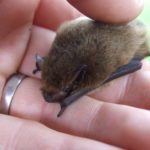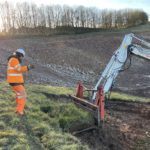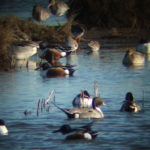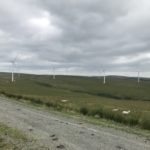Bioscan has worked with the Port of Tilbury (part of the Forth Ports group) for over a decade, developing an extremely detailed understanding of the Port’s landholdings within the Thames Gateway area, and drawing on this to develop bespoke ecological mitigation and compensation to support various applications for new infrastructure, including a new port terminal known as Tilbury2.
The Thames Gateway area is a hotspot for ‘brownfield’ biodiversity, which includes a diverse invertebrate fauna; as well as being a stronghold for reptiles and water voles.
LDP: During survey work to inform the development of the Port’s London Distribution Park (LDP) in Tilbury, the site was found to support a community of scarce brownfield invertebrate species that could not be fully retained on site. To compensate, new ‘brownfield’ habitat was created at nearby Mucking Landfill using waste chalk tunnel arisings; whilst on site at LDP, the peripheral drainage infrastructure was designed so as to create habitat for wetland invertebrates and water voles, as well as reptiles. This strategy was supported by the regulators Natural England and Thurrock Council, enabling the Port to secure planning consent.
Tilbury2: More recently, the Port of Tilbury sought to expand via a Development Consent Order (DCO) for the Tilbury2 port terminal. This involved similar constraints (invertebrates, water voles and reptiles) but with additional complexity represented by Local Wildlife Site designations within the site, and near-adjacent international designations in the form of the Thames Estuary & Marshes Special Protection Area (SPA) and Ramsar Site, as well as badgers, roosting bats, and scarce plants. Development of a mitigation and compensation strategy again involved liaison with Natural England and Thurrock Council, as well as with the Environment Agency and campaign group Buglife. Detailed mitigation strategies were designed into the scheme and presented during the DCO process, drawing upon the proven successes of on- and off-site mitigation for LDP. This work was instrumental in securing the Tilbury2 DCO, and Bioscan has continued to work closely with the Port to ensure on-going management of the compensation delivered.
Image attribution: Stevelaycock21, CC BY-SA 4.0, via Wikimedia Commons




